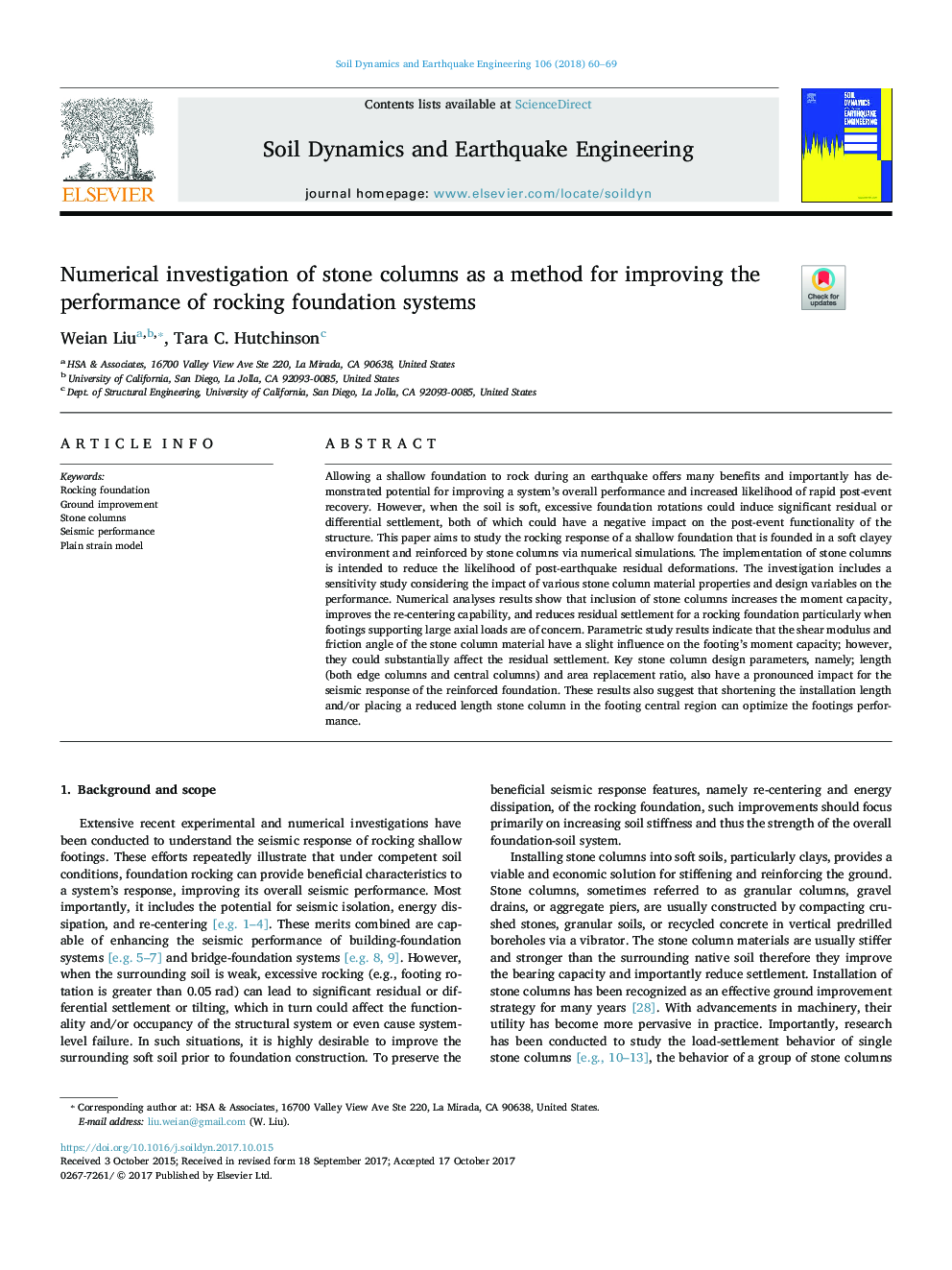| Article ID | Journal | Published Year | Pages | File Type |
|---|---|---|---|---|
| 6770770 | Soil Dynamics and Earthquake Engineering | 2018 | 10 Pages |
Abstract
Allowing a shallow foundation to rock during an earthquake offers many benefits and importantly has demonstrated potential for improving a system's overall performance and increased likelihood of rapid post-event recovery. However, when the soil is soft, excessive foundation rotations could induce significant residual or differential settlement, both of which could have a negative impact on the post-event functionality of the structure. This paper aims to study the rocking response of a shallow foundation that is founded in a soft clayey environment and reinforced by stone columns via numerical simulations. The implementation of stone columns is intended to reduce the likelihood of post-earthquake residual deformations. The investigation includes a sensitivity study considering the impact of various stone column material properties and design variables on the performance. Numerical analyses results show that inclusion of stone columns increases the moment capacity, improves the re-centering capability, and reduces residual settlement for a rocking foundation particularly when footings supporting large axial loads are of concern. Parametric study results indicate that the shear modulus and friction angle of the stone column material have a slight influence on the footing's moment capacity; however, they could substantially affect the residual settlement. Key stone column design parameters, namely; length (both edge columns and central columns) and area replacement ratio, also have a pronounced impact for the seismic response of the reinforced foundation. These results also suggest that shortening the installation length and/or placing a reduced length stone column in the footing central region can optimize the footings performance.
Related Topics
Physical Sciences and Engineering
Earth and Planetary Sciences
Geotechnical Engineering and Engineering Geology
Authors
Weian Liu, Tara C. Hutchinson,
